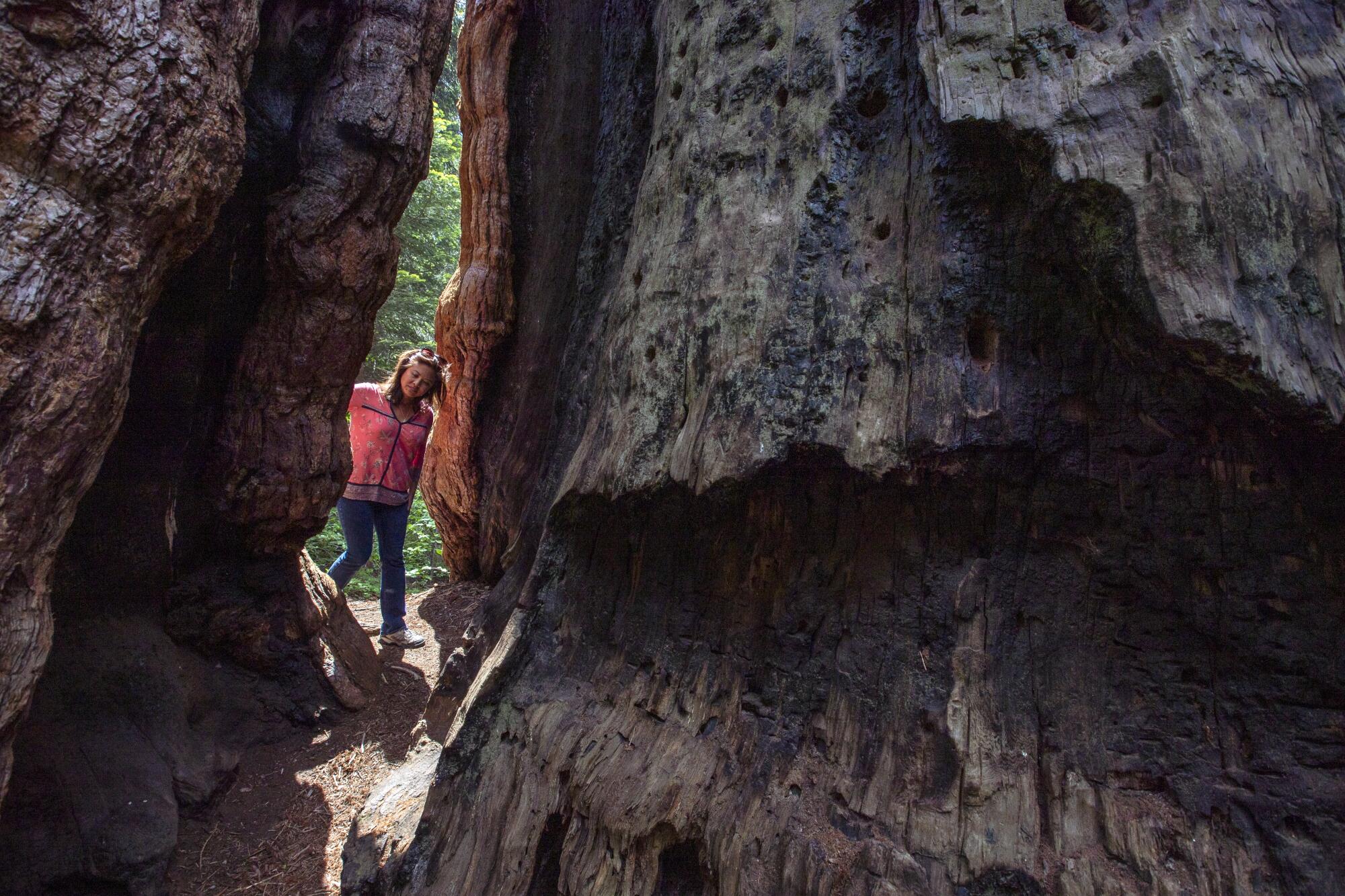
- Share via
SEQUOIA CREST, Calif. — Skip Rouch patted the base of the copper-hued giant. “Dad’s tree,” he said. “Dad picked it out before he died.”
But it wasn’t just Sonny Rouch’s tree in the figurative sense, the place where he wanted his ashes spread. His family owns it, along with hundreds of other giant sequoias in the Alder Creek Grove — the world’s largest private holding of the world’s largest trees.
That is about to end. After more than seven decades of ownership, the Rouchs have struck a deal to sell their sequoia-studded piece of the Sierra Nevada to the Save the Redwoods League, a century-old conservation group that has long hankered after the property.
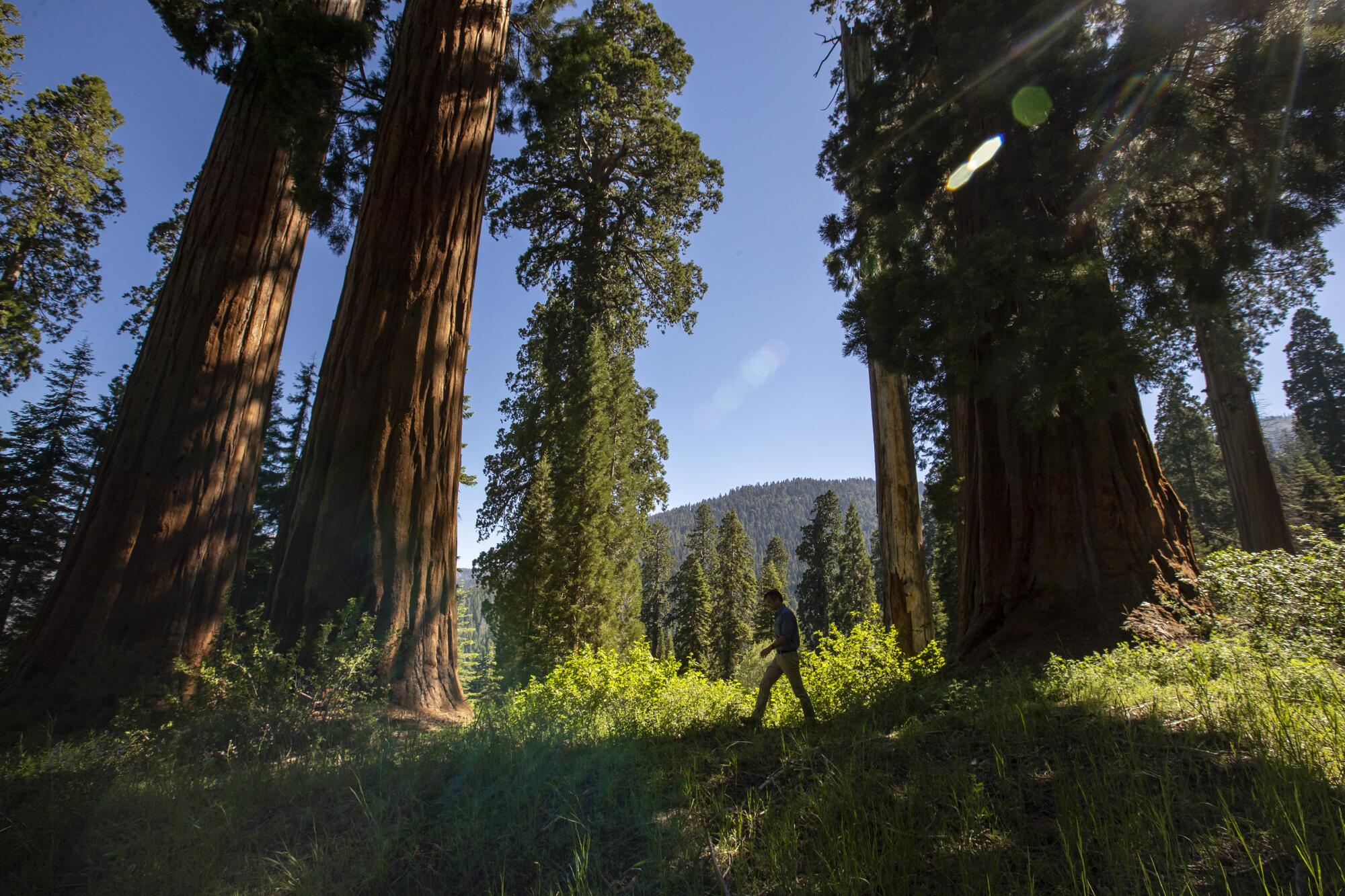
The story of the grove’s preservation is not the typical conservation tale. The Rouchs didn’t buy the 640-acre tract during World War II for the love of ancient sequoias. Their motive was far more practical.
“They were in the logging business and they needed trees,” said Mike Rouch, Skip’s brother.
Within a week of returning from the war, Sonny started clearing a six-mile dirt road to the land, which is surrounded by the Sequoia National Forest.
Logging crews cut down fir, sugar pine and cedar trees to supply the family’s lumber mill in Springville. They even felled more than two dozen giants, which were probably turned into shingles and fence posts because sequoia wood is too brittle to make good lumber.
“I heard we weren’t even paid for the ones that were taken down,” said Skip, who with his beard, Smokey Bear baseball cap, jeans and suspenders looks more like a Northern woodsman than a Central Californian.
“And Dad hated seeing them taken down,” he added.
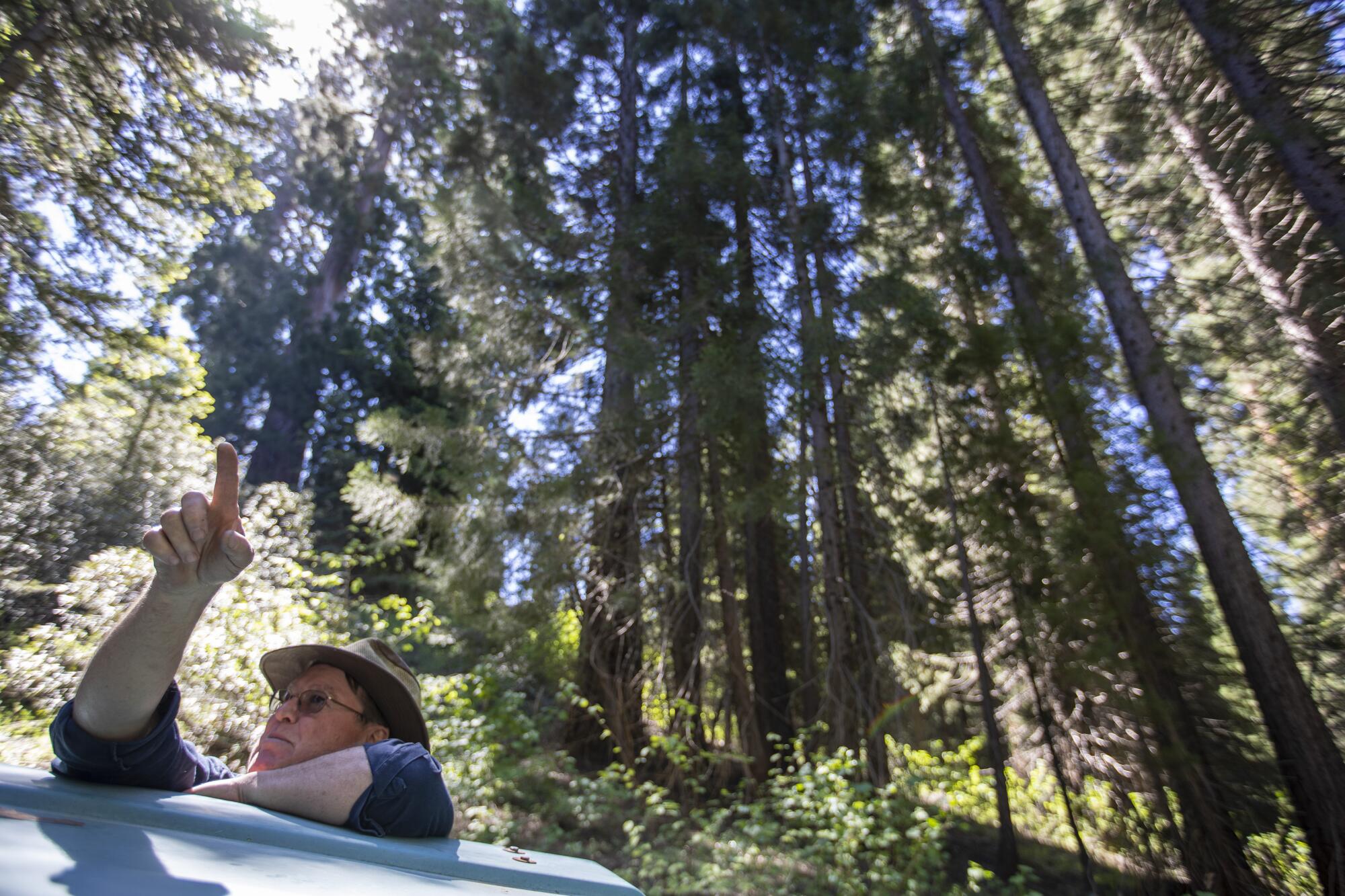
In the 1950s, the family cleared a hillside for a small ski run on their mountain property, installed some rope tows and drove skiers up the logging road from Wishon Camp in two old Army trucks.
The next decade they subdivided 110 acres into lots for mountain cabins, wooing buyers from Los Angeles with the chance “to own your own redwood tree.”
“We never cut any sequoia trees down for houses. Why would we? That was one of the things that people wanted,” Sonny said decades later in a talk to the Tulare County Historical Society.
And so, despite logging, a small subdivision and a short-lived ski operation, most of the Alder Creek Grove endures in shaggy-headed grandeur. The 530 acres that the redwoods league is purchasing are graced with 483 giant sequoias with diameters of at least 6 feet, including the 3,000-year-old Stagg tree.
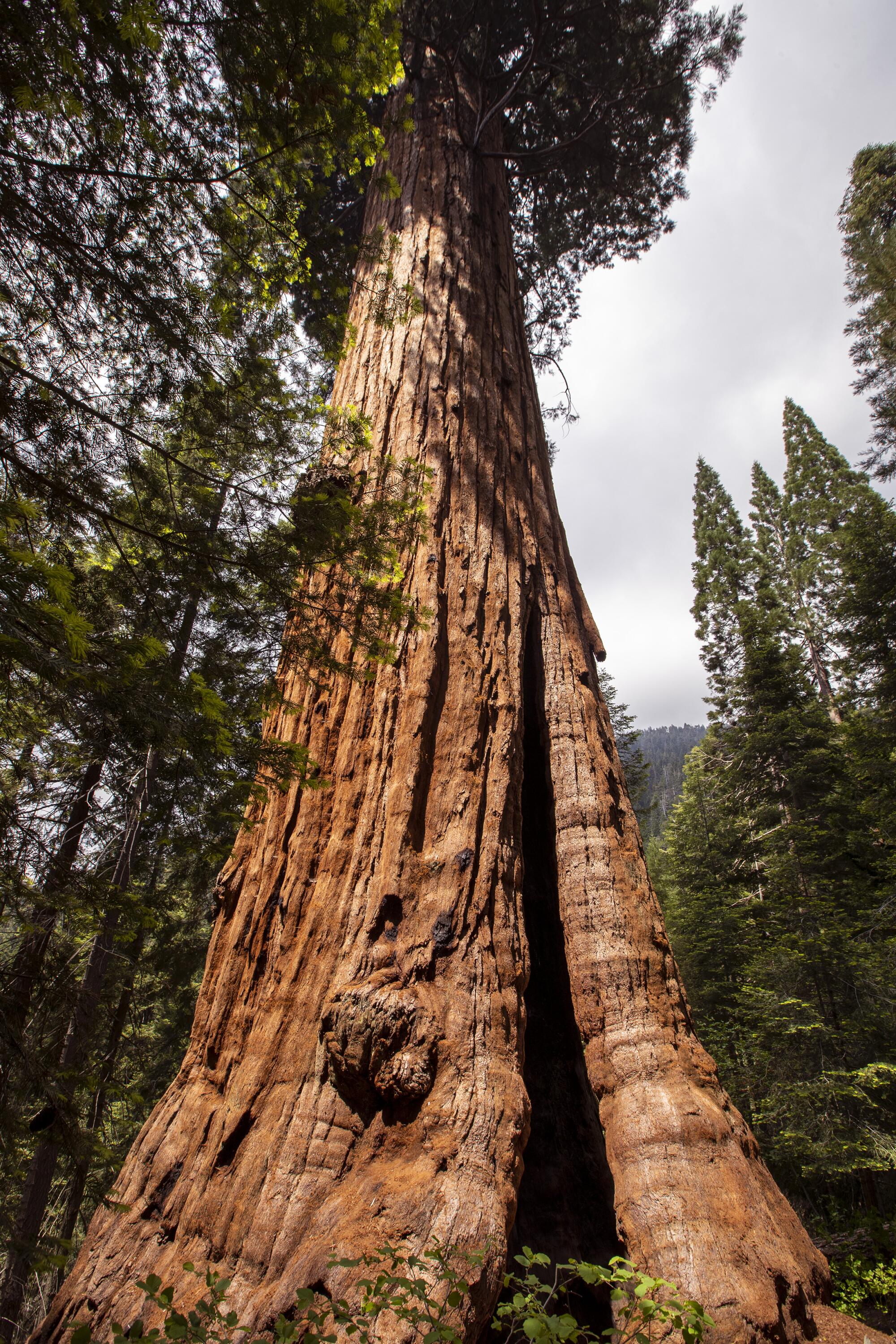
As tall as a 25-story building and wider than a two-lane road, the Stagg is the fifth-largest giant sequoia, as measured by trunk volume. That makes it the world’s fifth-biggest tree on record.
The family named the tree after the famous college football coach Amos Alonzo Stagg in a 1960 dedication ceremony. But Mike doesn’t think Stagg, who spent his final years in California and was then in his late 90s, ever saw his namesake sequoia, which has always been accessible to the public.
The dedication was basically a marketing ploy to draw attention to the family’s real estate venture.
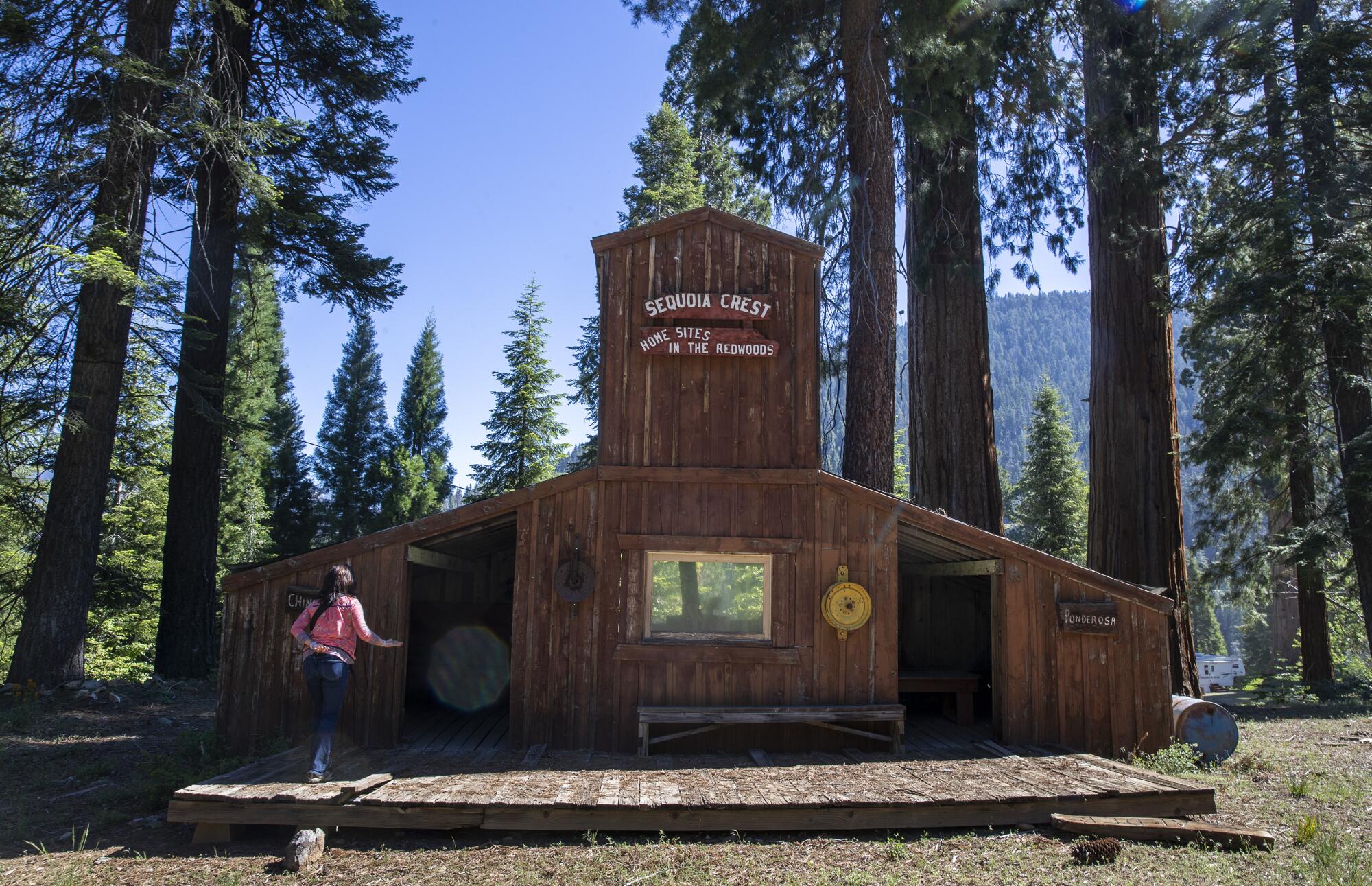
Over the last century, the league’s conservation efforts have focused on coast redwoods, the world’s tallest trees and a close relative of giant sequoias. But the organization has also worked to increase protections for the 73 groves of giant sequoias scattered across the western slopes of the central Sierra — their sole native habitat.
Most of the groves are on federal or state land, including Sequoia and Kings Canyon National Parks, the Sequoia National Forest and the Giant Sequoia National Monument — which abuts the grove. Of the 1,200 acres that remain in private hands, the Alder Creek parcel is by far the largest.
The redwoods league has been talking to the Rouch family about buying the land for more than a decade.
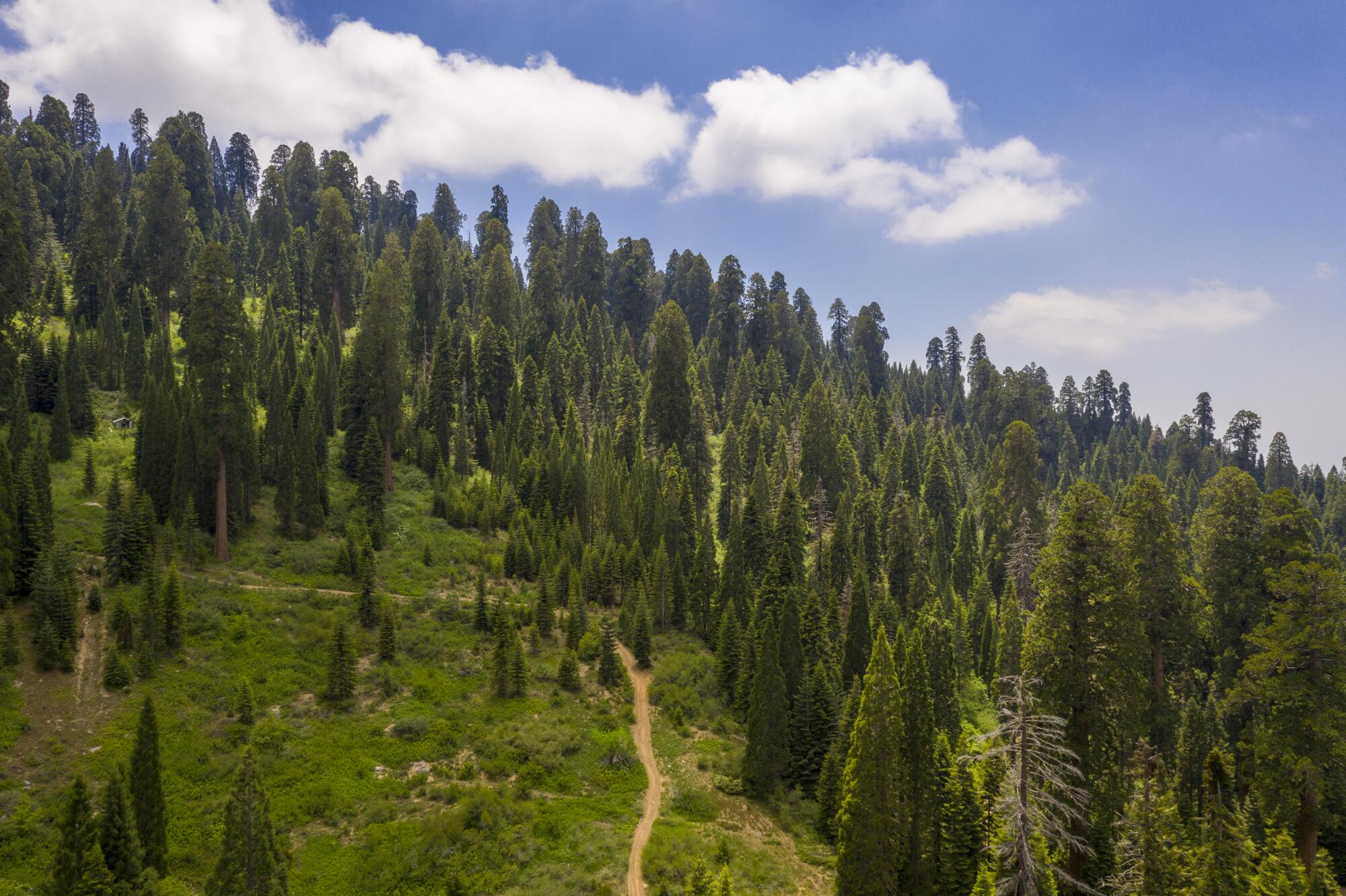
“They wanted more for the property than we thought was reasonable,” league President Sam Hodder said. “When you own the last of its kind in the world, it’s an interesting spot from which to negotiate.”
Skip, who has been in charge of selling the land, called the league’s initial appraisal “ludicrous” because it didn’t commercially value the sequoias.
He took straw polls of the family. They wouldn’t accept anything less than $10 million.
They wound up agreeing to $15.25 million. The league has to raise that sum, plus an additional $400,000 in transaction costs, by Dec. 31 to close the deal.
A handful of big donors — some from California and one redwood-loving couple from Nebraska — have so far committed a total of $7 million. Now, the league is launching a public campaign to raise the rest.
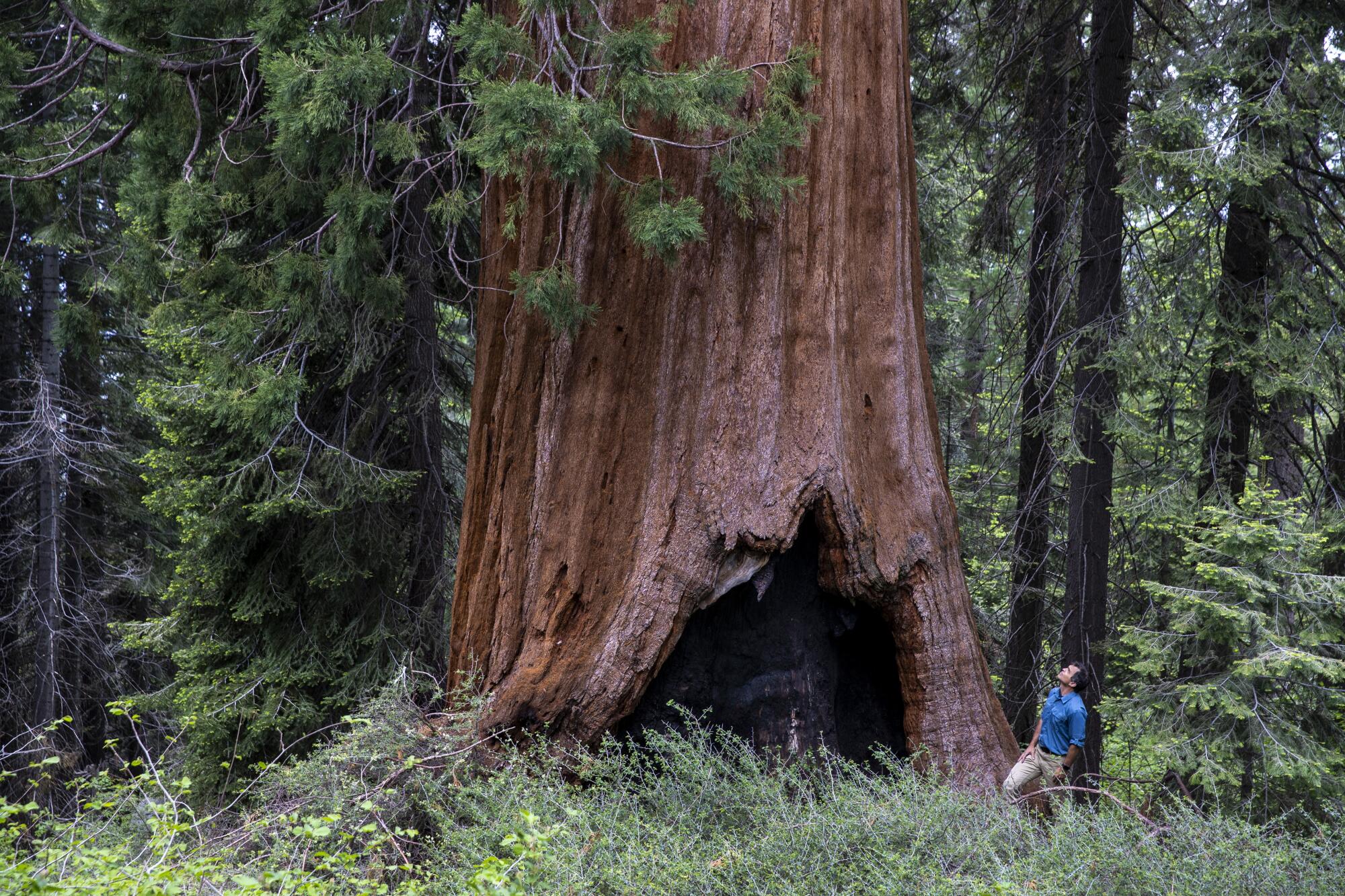
One day in June, Hodder marveled as he stood looking at a cluster of sequoias near Sonny’s favorite tree, where the ashes of Sonny’s wife, Tricia, were also spread.
“You can count — 1, 2, 3, 4, 5, 6, 7, 8, 9, 10, 11 — all of these are 1,000 to 2,000 years old or more,” he said. “It’s mind-boggling to think some of them have been growing since the pyramids. That’s just mind-bending.”
The grove also has a good number of young sequoias, 50 to 200 years old. That makes it “an exceptional giant sequoia site,” Humboldt State scientist Jim Campbell-Spickler said.
He’s not sure why, because it’s been more than a century since most of the grove has experienced wildfire that spurs sequoia regeneration. Perhaps, he said, it’s because the north-facing slopes retain moisture that helps sustain seedlings.
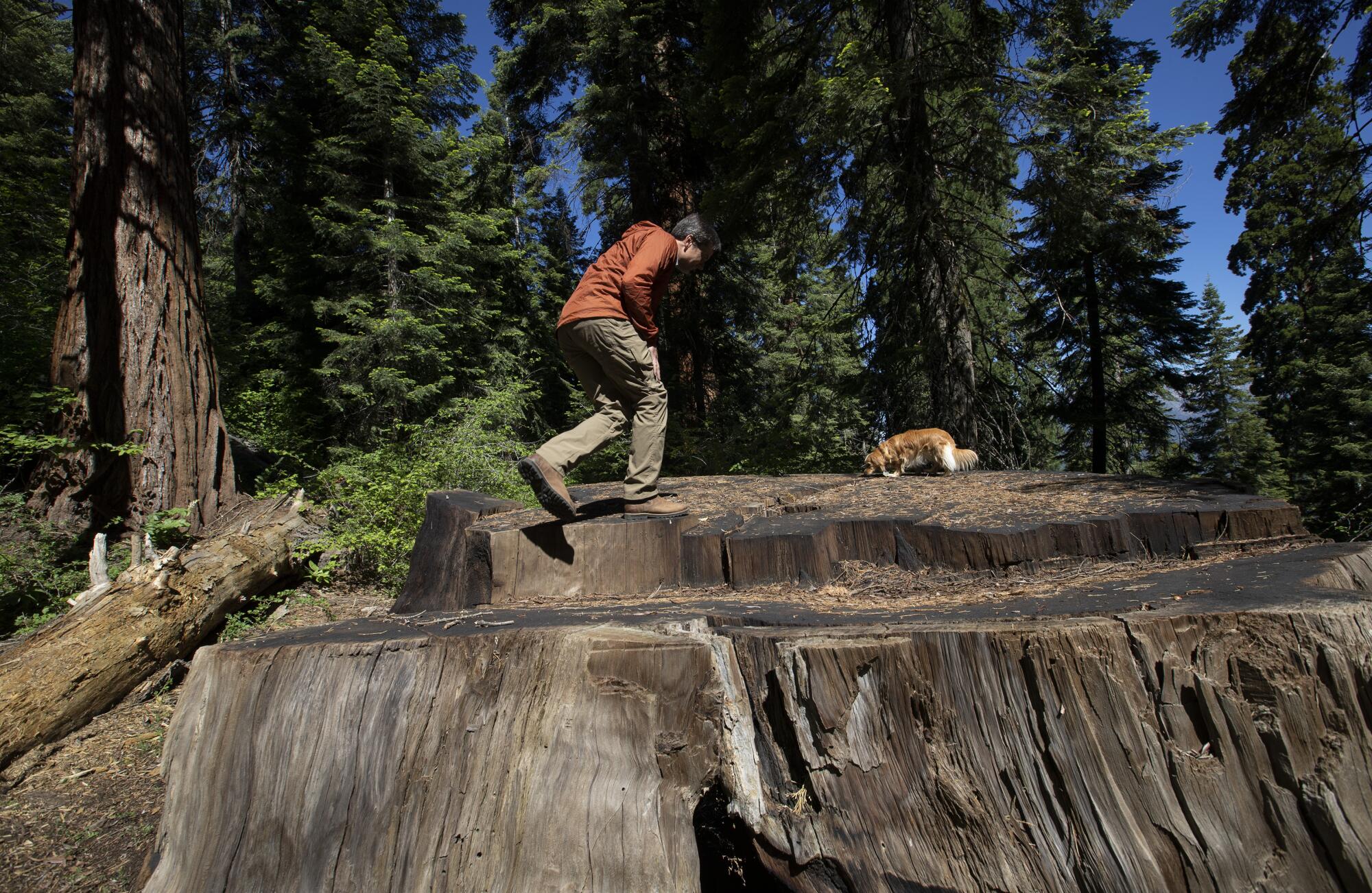
Skip slyly suggests another reason: “I always say they felt sorry that the other ones had died and they grew like crazy.”
The league plans to keep the property for five to 10 years, thin non-sequoias that it says have grown too dense in the absence of wildfire, and then sell the land, presumably at a discount, to the U.S. Forest Service for inclusion in the neighboring national monument.
Skip isn’t thrilled with the idea of government ownership. “I feel like we’ve done a better job than the government usually does of taking care of the forest,” he said.
But selling to the league settles the grove’s future. Otherwise, he said, “we don’t know once I’m gone and the rest of my siblings and cousins are gone, what would happen then.”
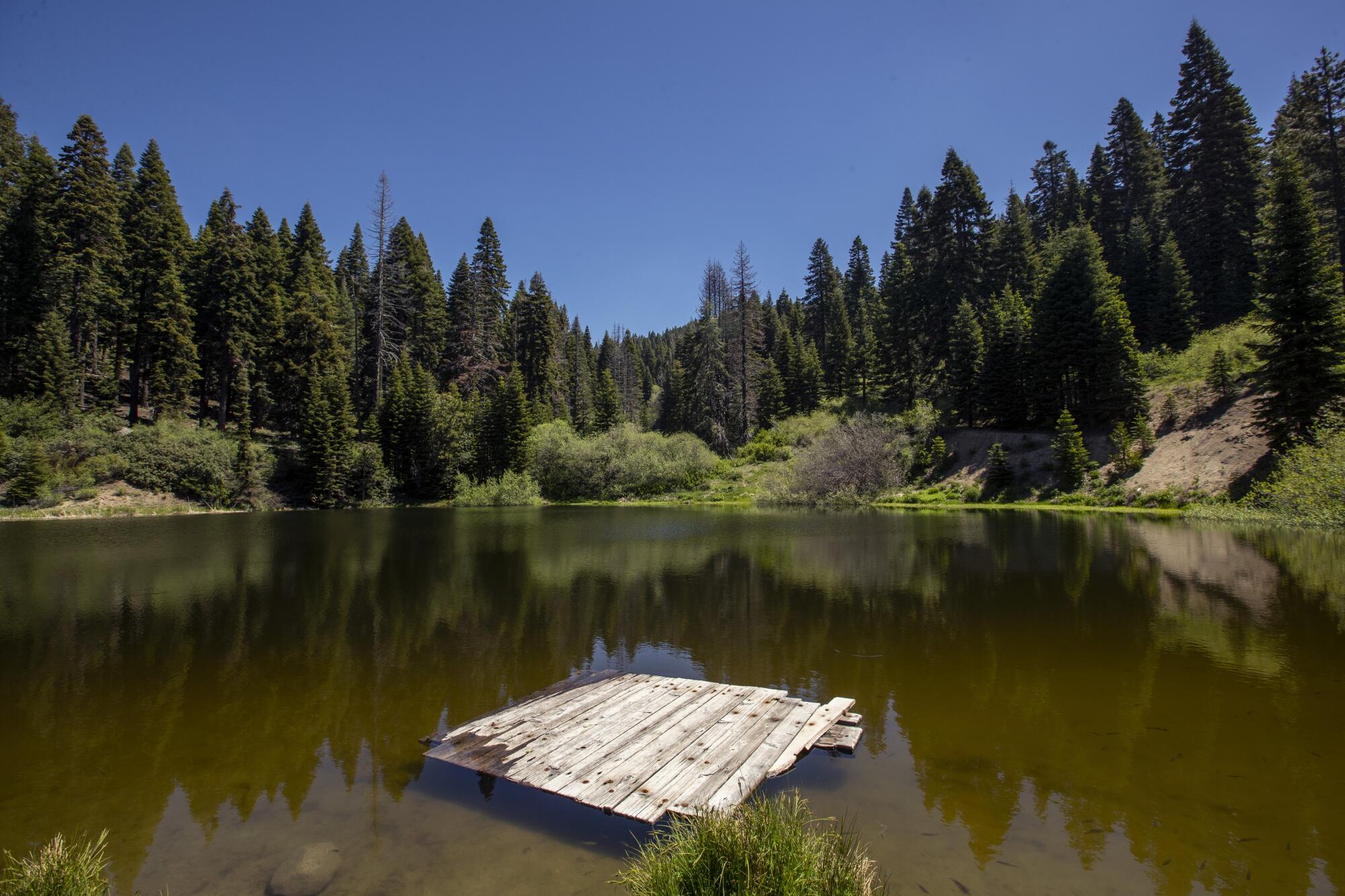
Skip, 68, and Mike, 62, grew up in the shadow of the massive trees. As children, they played on hulking trunks of giants that had fallen centuries before, pretending they were pirate ships.
“I really like ’em and they’re really big,” Skip said. “But they’ve just always been here for me.
“I’ve actually grown to appreciate ’em more by seeing how much everybody else appreciates ’em,” he added. “And I’m so thankful we have so many left.”
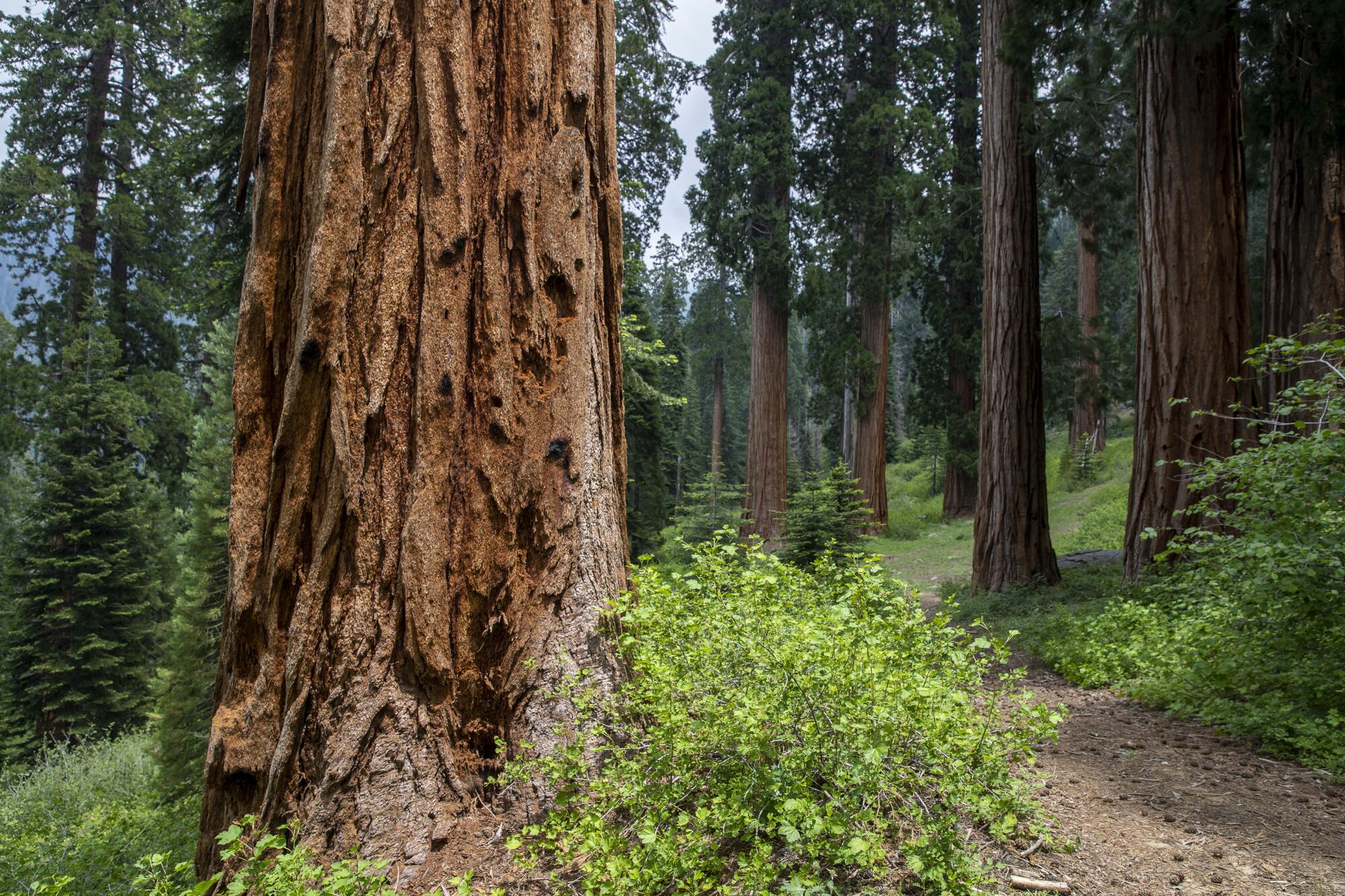
More to Read
Sign up for Essential California
The most important California stories and recommendations in your inbox every morning.
You may occasionally receive promotional content from the Los Angeles Times.











